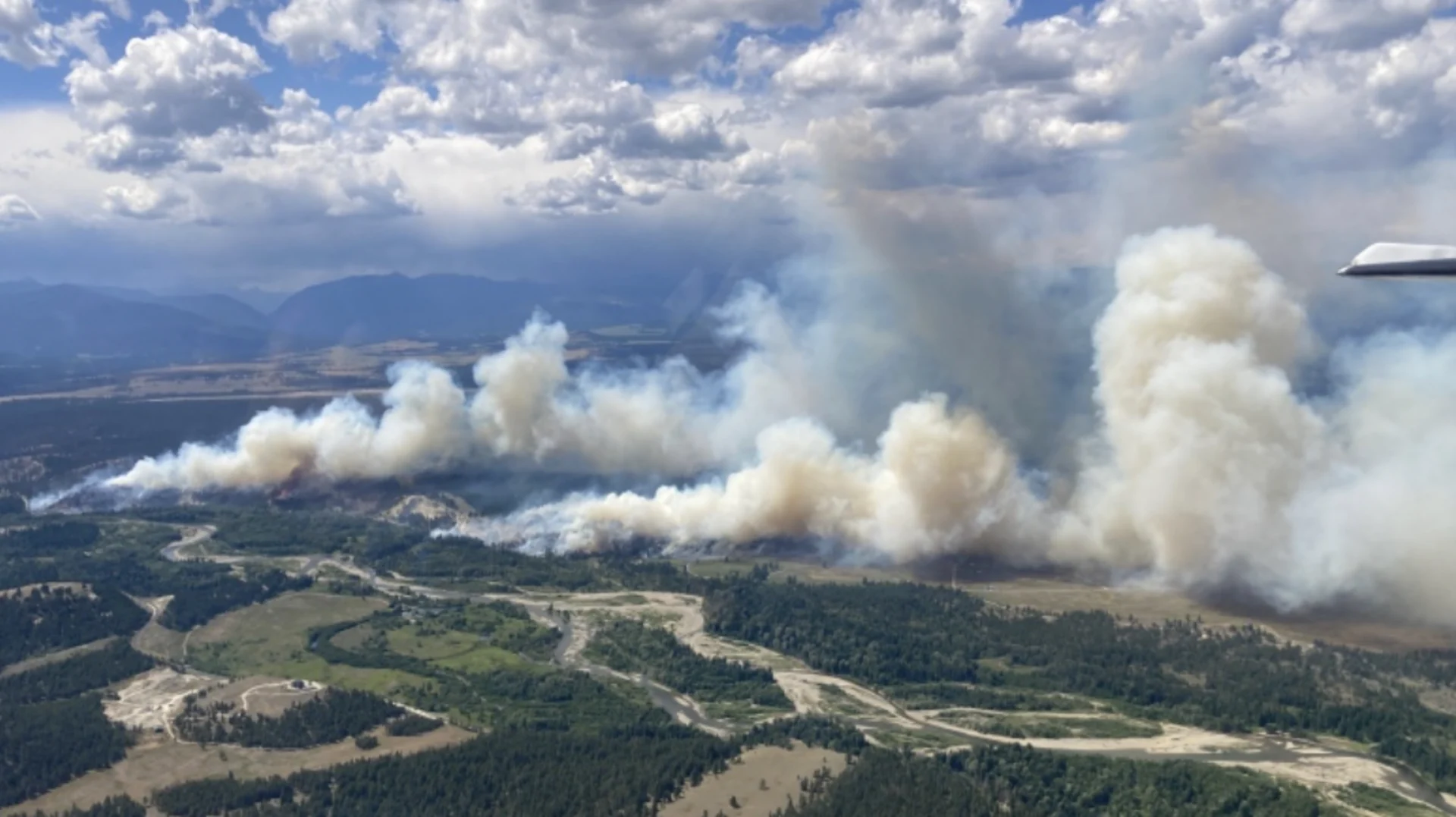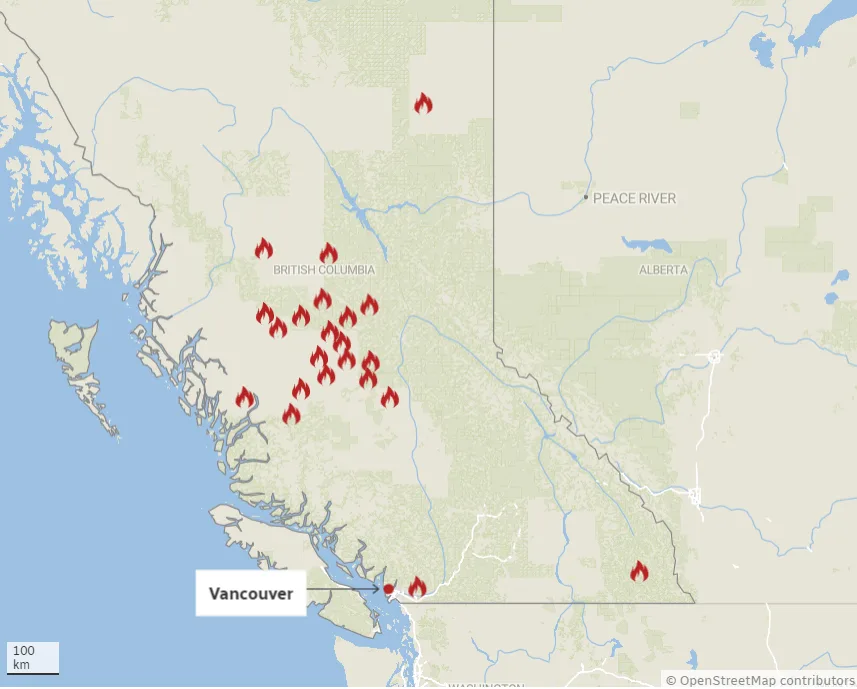
St. Mary's River wildfire more than triples in size within 24 hours
STAY INFORMED: Visit The Weather Network's hub for all wildfire information in Canada
The St. Mary's River wildfire, located north of Cranbrook, B.C., and still raging out of control, saw substantial growth on Thursday.
According to the B.C. Wildfire Service (BCWS), as of Thursday afternoon, the fire had expanded to cover an area of 26 square kilometres, more than triple the 8.5 kilometres estimated on Wednesday. It was three square kilometres in size when it was first detected on Monday.
Late Wednesday, the growing wildfire prompted the Regional District of East Kootenay (RDEK) to issue an evacuation order for 15 properties north of the ʔaq̓am Community in the Woods Corner East area near Cranbrook, including a number that had been on alert since early Tuesday morning.
The district issued a state of local emergency for its electoral area "E," which includes areas under the evacuation order. It also expanded its evacuation alert to cover nine properties in the Woods Corner West area.
Early Thursday evening, the district issued an area restriction order for the vicinity of the St. Mary's River wildfire, prohibiting anyone from staying in or entering the area about 12 kilometres northeast of Cranbrook except with permission from the province.
The district said gusting late-day winds, increased fire behaviour and growth prompted the alerts and orders.
An evacuation order means residents should leave immediately, whereas an evacuation alert means residents should prepare to evacuate their homes with little to no notice.
BCWS spokersperson Cliff Chapman said at a news conference Thursday that the situation with the St. Mary's River wildfire is going to be challenging over the next few days.
"Our fuel conditions are as dry as we've ever seen them, and that goes from the surface layer fuel, the quick, fast-burning fuels, the grass and the moss all the way to the large standing timber," he said.
RELATED: The 2023 wildfire season is now B.C.'s most destructive on record
Earlier Wednesday, Nasuʔkin (Chief) Joe Pierre Jr. of the ʔaq̓am Community, a member of the Ktunaxa First Nation, said seven homes had been lost to wildfire.
Since its discovery on Monday, the St. Mary's River wildfire has displaced about 95 members of the Indigenous community, according to the B.C. Wildfire Service (BCWS).
The RDEK issued an evacuation order on Monday for 52 homes, along with an evacuation alert for 43 properties in Fort Steele, a small town near ʔaq̓am, about 10 kilometres northeast of Cranbrook's city limits.
The fire has caused the failure of Fort Steele's water treatment facility — one of the properties under evacuation alert — prompting Interior Health to issue a boil water advisory which could affect up to 5,000 residents.

Fires of note throughout B.C. on July 19. Source: B.C. Wildfire Service (Akshay Kulkani/CBC)
Wildfire fight set to move south
The BCWS classifies the St. Mary's River wildfire as a "wildfire of note," meaning it is highly visible or poses a potential threat to public safety.
There are currently 23 wildfires of note burning across the province, most of them located in central and northern regions.
Chapman says B.C.'s wildfire fight is set to move toward the province's more populated southern areas, including Cranbrook, amid hot and windy weather, while cooler temperatures and rain are expected to bring some relief in scorched northern regions.
Environment Canada forecasts showers from Friday until next Wednesday in Fort Nelson, the northern community where firefighters have been battling the massive Donnie Creek wildfire, the largest blaze in B.C.'s history now covering more than 5,832 square kilometres.
However, Cranbrook is forecast to receive only showers on Friday, while the rest of the weekend and next week is forecast to remain hot and dry.
Thumbnail image courtesy of B.C. Wildfire Service via CBC News.
This article was originally written by and published for CBC News. With files from Dirk Meissner of The Canadian Press.










